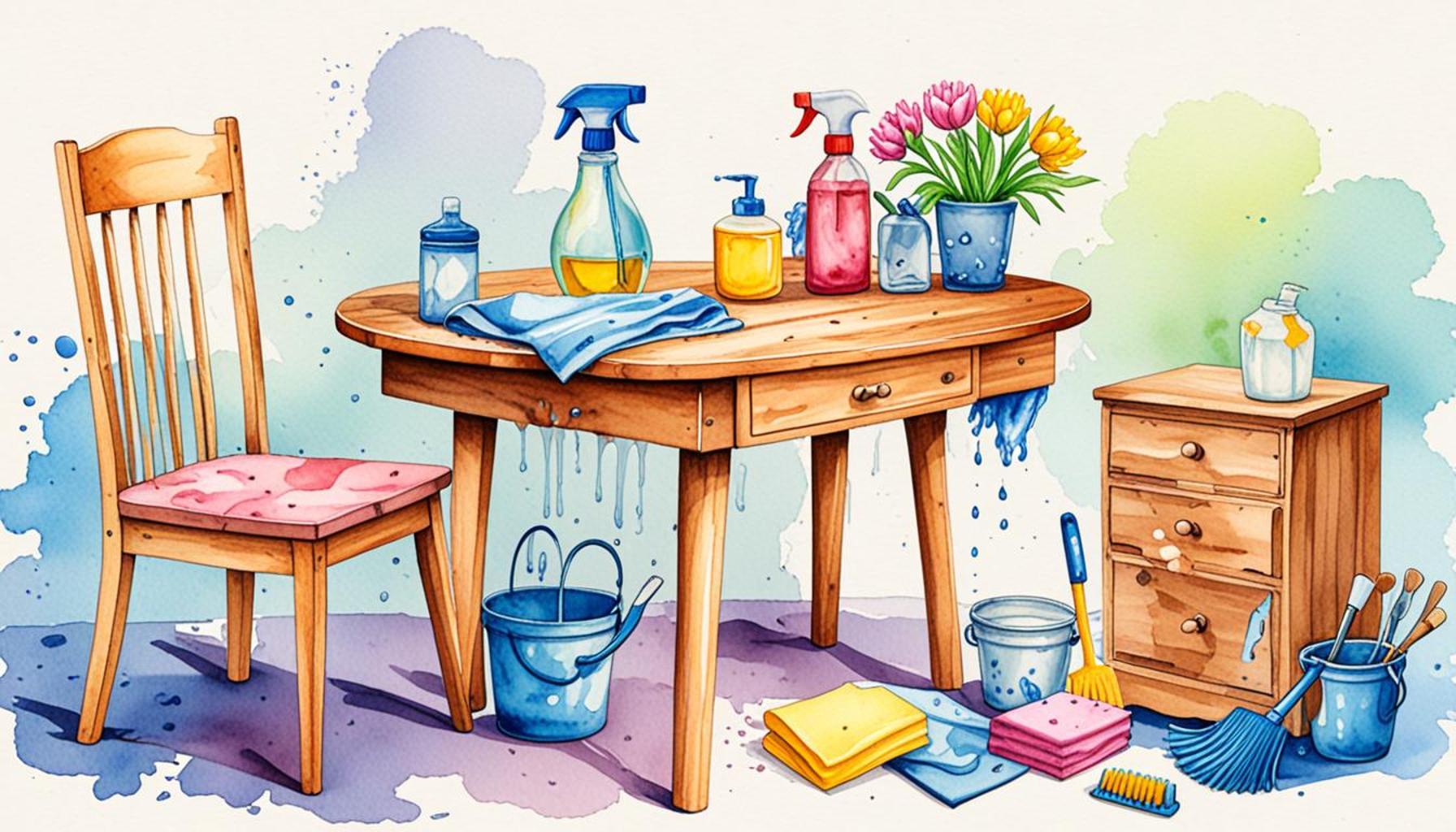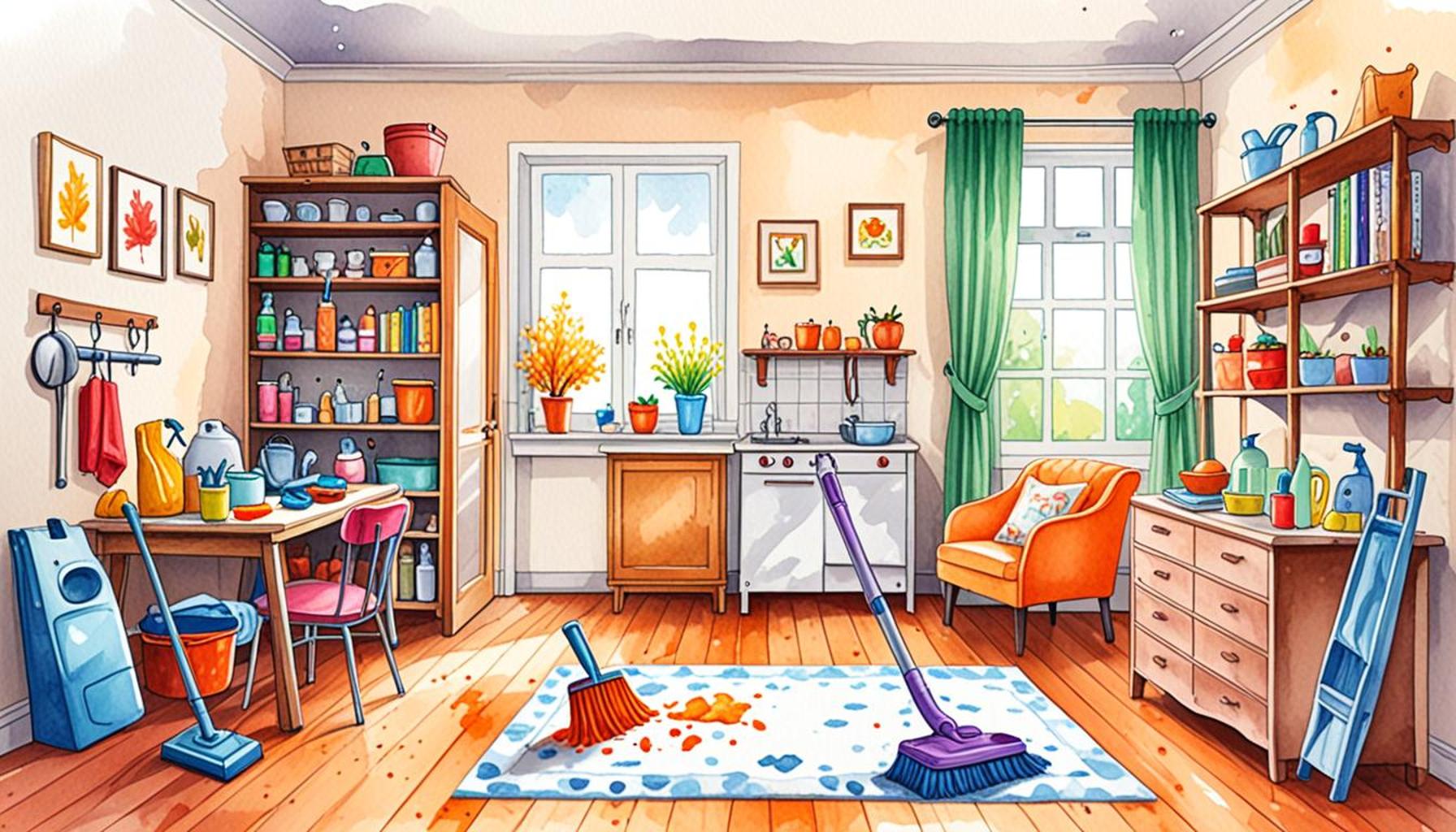Ultimate Guide Clean Maintain Wooden Furniture for Lasting Shine

Understanding the Importance of Wooden Furniture Care
Wooden furniture holds a special place in many American homes, known for its charm and versatility. However, maintaining its elegance goes beyond aesthetics—it touches on several key aspects of homeownership, proving essential for those who wish to preserve their investments and cultivate a welcoming environment.
Why Regular Care Matters
Wood is a natural material prone to wear and tear. Regular cleaning and maintenance are crucial for several reasons:
- Durability: Over time, neglect can lead to significant damage such as cracks, scratches, and fading. By routinely caring for your wooden furniture, you can extend its life considerably. For instance, a well-maintained oak dining table can withstand years of family gatherings and dinners without losing its character.
- Aesthetics: Dust, dirt, and grime can obscure the natural beauty of wood. A simple cleaning routine can help maintain its finish and luster, making a striking difference in your home’s overall appearance. Consider using a microfiber cloth for daily dusting to avoid scratches while enhancing shine.
- Health: Wooden furniture can harbor dust mites and allergens, compromising indoor air quality. Regular cleaning not only keeps your furniture looking pristine but also ensures a healthier living space for you and your family. For example, using natural cleaners can reduce chemical exposure while enriching your home environment.
In light of these factors, understanding the essence of wood care becomes vital. This guide aims to provide you with effective methods tailored to various types of wood, cleaning tips, and maintenance rituals.
Types of Wood and Their Unique Care Requirements
Different wood types come with distinct characteristics, necessitating specific cleaning approaches. For instance, softwoods like pine require gentle care, whereas hardwoods such as walnut can withstand more robust products. Knowing your furniture’s material allows you to choose the right cleaners and tools, minimizing risk and maximizing longevity.
Cleaning Products and Techniques
When selecting cleaning products, it is important to choose those that are specifically formulated for wood. Options like beeswax polish not only clean but also nourish the wood, giving it a protective layer. Rubbing alcohol diluted with water is another favorite among homeowners, effective for removing sticky residues without damaging the finish. The technique of applying these products also matters; using a soft, circular motion helps evenly distribute the cleaner while avoiding streaks.
Routine Maintenance Rituals
Integrating regular maintenance practices into your home care regimen can be surprisingly simple. Establish a monthly deep cleaning schedule accompanied by periodic inspections for signs of wear or damage. Keeping furniture away from direct sunlight and using coasters to prevent water rings are small yet effective strategies that can prevent larger issues down the line.
In summary, maintaining wooden furniture not only enhances its beauty but also fortifies its endurance against the hands of time. Whether you are a seasoned homeowner or just starting, these insights can significantly elevate your care routine. Explore further and enjoy the satisfaction of preserving your wooden furniture for generations to come.
CHECK OUT: Click here to explore more
Essential Cleaning Techniques for Wooden Furniture
Cleaning wooden furniture does not merely involve wiping surfaces; it requires an understanding of proper techniques and products to maintain that lasting shine. Emphasizing the right approach can transform your cleaning routine from a simple chore into an art form that preserves both beauty and integrity.
Everyday Cleaning Practices
To maintain wooden furniture effectively, daily care is pivotal. This involves more than just occasional dusting; a few intentional habits can significantly enhance the lifespan of your pieces:
- Dusting: Utilizing a microfiber cloth is highly recommended for routine dusting. This fabric captures dust rather than just moving it around, ensuring a clean surface that doesn’t scratch the wood. Make it a habit to dust once a week to avoid buildup.
- Spot Cleaning: Address spills immediately. Whether it’s a stray coffee mug or a dropped snack, prompt attention to spills can prevent stains and damage. Use a soft, damp cloth to gently dab the area, followed by a dry cloth to absorb any moisture.
- Use of Polishes: Depending on your wood type, a non-toxic furniture polish can add an extra layer of shine while also providing some protection. Look for options that are specifically formulated for your wood type, as this ensures compatibility and optimal results.
Deep Cleaning for Preservation
While daily cleaning is essential, comprehensive deep cleaning should be performed monthly to address any accumulated grime that may compromise the finish:
- Choosing the Right Cleaners: Avoid all-purpose cleaners and instead opt for pH-balanced cleaning solutions made for wood. These products will clean without stripping the furniture of its protective coating.
- Application Techniques: When applying cleaning agents, use a soft cloth to rub in small, circular motions, ensuring that you are not saturating the wood. Follow up with a dry cloth to buff the surface for added brilliance.
- Nourishing Your Wood: Consider using a natural oil, such as lemon or mineral oil, occasionally to nourish dry wood. Apply a small amount with a cloth and rub it in well, which will help in preventing cracking and fading.
Preventive Measures
As with any valuable investment, prevention is better than cure. There are several steps you can take to protect your wooden furniture:
- Position Wisely: Keep furniture away from direct sunlight to prevent fading and cracking. Using UV-protective window films or curtains can be beneficial.
- Humidity Control: Wood is sensitive to humidity changes. Maintaining a consistent level of humidity in your home using a humidifier or dehumidifier can significantly reduce warping.
- Protective Coverings: Coasters and placemats are your allies. These small items can prevent scratches and water rings from ruining your treasured pieces.
By adopting these cleaning techniques and preventive practices, you can ensure that your wooden furniture not only looks stunning but also withstands the tests of time. With a little dedication, your furniture will continue to serve as a focal point in your home, radiating warmth and elegance for years to come.
| Advantage | Details |
|---|---|
| Enhanced Durability | Regular cleaning and maintenance significantly increases the lifespan of your wooden furniture, helping avoid costly repairs or replacements. |
| Natural Shine | Proper maintenance techniques, such as polishing and conditioning, ensure that your furniture retains its natural luster, making your home feel warm and inviting. |
In addition to these advantages, understanding the materials your furniture is made of can greatly enhance your cleaning routine. For instance, using the appropriate cleaning solutions can protect the wood’s finish from damage and prevent discoloration. Furthermore, regular inspections can identify potential issues before they necessitate extensive repair work. By keeping your furniture clean, you not only promote its longevity but also contribute to a healthier indoor environment, as dust and allergens are kept at bay. Whether it’s a cherished heirloom or a modern piece, good care ensures your wooden furniture remains an integral part of your home’s aesthetics for years to come.
CHECK OUT: Click here to explore more
Specialized Care and Restoration Techniques
For wooden furniture to maintain its stunning appearance, specialized care is occasionally necessary. Just like any masterpiece, your wooden pieces may suffer from wear and tear over time. Understanding the art of restoration will empower you to breathe new life into your furniture, revealing its full potential.
Identifying Damage
Before diving into restoration, it’s vital to identify the type of damage your furniture has incurred:
- Scratches: These are common on surfaces and can often be remedied with simple techniques. For shallow scratches, use a crayon or a wood filler in a matching shade to fill in the blemish. For deeper scratches, a fine grade sandpaper can be utilized cautiously, followed by a touch of polish to restore shine.
- Water Rings: Often caused by cups or glasses left on the surface, these rings can be tackled using a mixture of equal parts vinegar and olive oil. Apply with a soft cloth, following the grain of the wood for effective results.
- Fading or Discoloration: Direct sunlight can lead to fading. If a piece shows uneven coloring, a light sanding and reapplication of finish could even out the look. Always test in a discreet area first to ensure color match.
Refinishing Your Furniture
When restoration goes beyond simple repairs, refinishing your wooden furniture may be necessary. This process can completely revive an aged piece:
- Stripping the Old Finish: Use a chemical stripper or a heat gun to remove the previous finish carefully. Ensure you are wearing gloves and working in a well-ventilated area for safety.
- Sanding: After stripping, sand the surfaces with a fine-grit sandpaper to create a smooth base for applying a new finish. Be sure to follow the grain of the wood to maintain its integrity.
- Applying a New Finish: Options include varnish, lacquer, or oil, depending on the desired look and durability. Use a brush or a cloth to apply, and allow it to dry thoroughly between coats. This not only enhances appearance but also creates a protective barrier against future damage.
Regular Inspection and Maintenance
Beyond cleaning and occasional restoration, regular inspection is crucial in maintaining the quality of your wooden furniture:
- Check for Loose Joints: Over time, furniture may develop loose joints, which can lead to structural issues. Use wood glue to re-secure joints, clamping them together until dry for a strong hold.
- Evaluate Hardware: Regularly inspect hinges, knobs, and other hardware components for functionality. Tightening screws or replacing worn-out parts can enhance the longevity of your furniture.
- Seasonal Maintenance: Consider the changing seasons as a cue for maintenance tasks. In the summer, maximize humidity control; in winter, periodically check for dryness that could affect the wood’s texture.
Investing in these specialized care techniques and regular maintenance will ensure that your wooden furniture not only retains its physical beauty but also stands as a cherished part of your home for generations. By understanding the unique characteristics of wood, you empower yourself to safeguard both its aesthetics and function.
CHECK OUT: Click here to explore more
Conclusion: Preserving the Beauty of Wooden Furniture
In conclusion, maintaining the lasting shine of wooden furniture is both an art and a science. By following the strategies outlined in this guide, you can ensure that your cherished pieces remain stunning and functional for years to come. Whether it’s through daily cleaning, special restoration techniques, or regular inspections, each step you take contributes to the longevity and beauty of your furniture.
It’s essential to approach care with an understanding of wood’s unique properties, as well as an awareness of its vulnerabilities to elements such as moisture and sunlight. Remember, even minor scratches and water rings can be effectively addressed with the right method, giving your furniture a refreshed look without the need for drastic measures. For more significant wear, refinishing offers a transformative solution, breathing new life into older pieces.
Moreover, staying proactive with seasonal maintenance can mitigate potential issues caused by environmental changes, ensuring that your wooden furniture remains in pristine condition throughout the year. By incorporating inspections and repairs into your routine, you not only extend the life of the furniture but also retain its aesthetic appeal as a centerpiece in your home.
As you implement these practices, you’ll likely develop a deeper appreciation for the craftsmanship that went into each piece, as well as a personal connection with your furniture. Take pride in maintaining these beautiful elements of your home, and they will reward you with lasting shine and character. Embrace the journey of caring for your wooden furniture, and discover how rewarding it can be to create a warm and inviting environment that showcases the beauty of nature.



